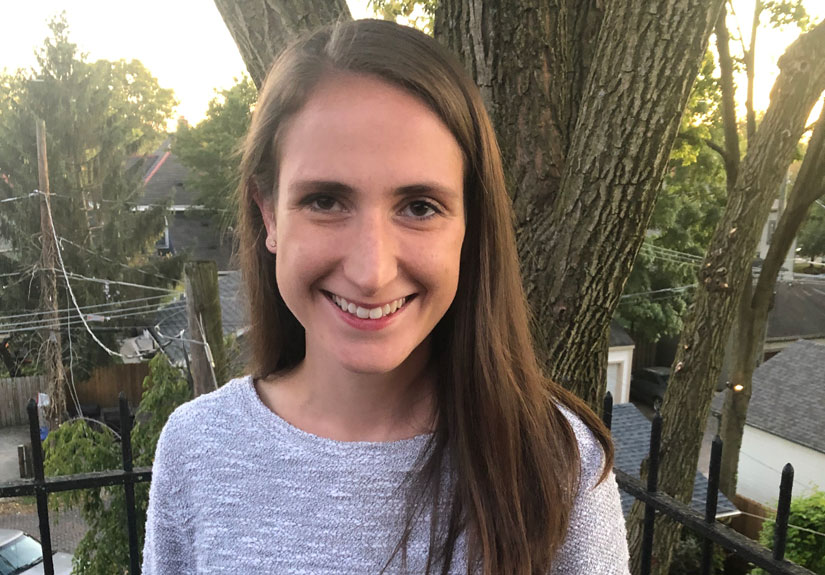Public Health Buckeyes: Anna Eames Seffernick
Doctoral student forging path in genomics research

Meet Anna Eames Seffernick, a fifth-year PhD student in biostatistics who’s graduating this summer. Seffernick’s passions for math, science and improving clinical outcomes made biostatistics a great match for her. (Read more about the power of biostatistics in public health). An Ohio native and Ohio Wesleyan University alumna, Seffernick will begin a postdoctoral position this fall at St. Jude Children’s Research Hospital, where she’ll work on genomics related to acute myeloid leukemia.
Question and Answer
Why did you decide to pursue biostatistics at Ohio State?
Since I grew up in Ohio, I knew Ohio State would be a great place to pursue my graduate studies. I was really drawn to biostatistics because it combines my love of math and science. The biostatistics program at Ohio State is unique in that it is joint between the Department of Statistics and the College of Public Health, so it’s strong in both theoretical and applied aspects of statistics. Plus, there are so many research opportunities at Ohio State, which really help students learn to turn theory into practice.
Can you tell us about your research?
My research involves building Bayesian statistical models to identify genomic features related to outcomes in acute myeloid leukemia (AML), a type of blood cancer. One of the outcomes we are interested in is a risk classification that differentiates patients into having favorable, intermediate or adverse prognoses. The genes identified to be associated with this outcome might be used as potential biomarkers for diagnosis or prognosis.
Another outcome we are studying is a discrete survival variable, where a patient’s overall survival is split into intervals such as 0-6 months, 6-12 months, etc. AML is a variable disease, with some patients responding very well to treatment and surviving a long time, and others unfortunately failing to see improvements. We hope to identify genes and proteins that are associated with survival, as these could be potential targets for novel therapeutics and ultimately help improve survival rates.
What excites you the most about your research?
I like working on a problem that is both statistically interesting and clinically meaningful. It is exciting to think that our model could be used to advance the understanding of AML and potentially contribute to improved diagnosis or treatment for patients.
What’s something you wish people knew more about your area of expertise?
I wish people knew that biostatisticians can be helpful during all phases of the research process, not just after the data have been collected. We can help design experiments so that the questions of interest can be addressed with the best possible data.
Are you involved in any other academic, professional or student activities?
I am co-chair of the Council for Emerging and New Statisticians (CENS), which is a part of the Eastern North American Region (ENAR) section of the International Biometric Society. CENS works to support graduate students and early career statisticians by communicating with ENAR and hosting events such as panel discussions and networking mixers at conferences.
What advice would you give to students considering pursuing a doctorate?
I would suggest that students considering pursuing a doctorate ask a lot of questions throughout the admissions process. Try to talk to students as well as faculty to see if the program is a good fit for you. Once in a PhD program, try to get to know your classmates. Grad school is hard and having friends to work with is so helpful.
What do you hope for the future of public health?
My hope is that public health research and initiatives will be well-funded in the near future, so that we can take data-driven approaches to improve the health of everyone.
About The Ohio State University College of Public Health
The Ohio State University College of Public Health is a leader in educating students, creating new knowledge through research, and improving the livelihoods and well-being of people in Ohio and beyond. The College's divisions include biostatistics, environmental health sciences, epidemiology, health behavior and health promotion, and health services management and policy. It is ranked 22nd among all colleges and programs of public health in the nation, and first in Ohio, by U.S. News and World Report. Its specialty programs are also considered among the best in the country. The MHA program is ranked 5th and the health policy and management specialty is ranked 21st.